This is one of my Passion Project posts, where we talk to people doing cool projects and find out what makes them tick and how you can get involved. Today we’re talking to a couple from San Jose, CA who are among 1,400 local volunteers that raise puppies for Guide Dogs for the Blind.
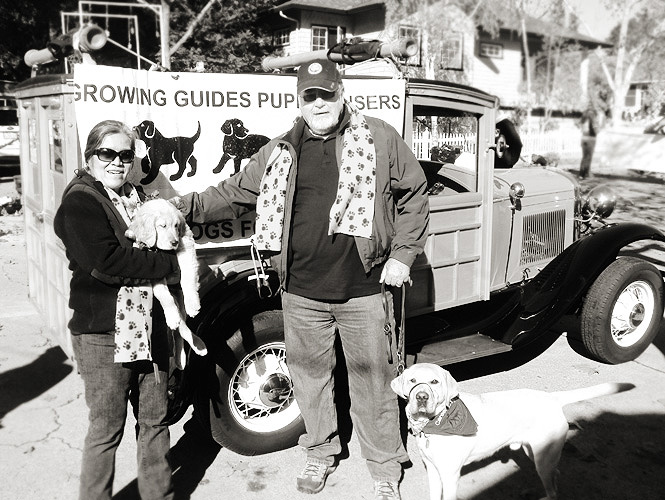 Mala and Greg with guide-dogs-in-training Clinton and Rialta What is your passion project?
We have always loved dogs and decided to volunteer to be Puppy Raisers for Guide Dogs for the Blind (GDB). GDB is the largest Guide Dog School in the country and headquartered in San Rafael, CA. They have a second campus in Boring, OR.
Why does raising guide dogs matter?
GDB is a non-profit charitable organization to provide a safe means of mobility for people who are blind and visually impaired. The programs are made possible through teamwork of staff, volunteers, and generous donors. When a guide dog graduates after their training period, it is amazing to see how smart they are in following simple directions and aware in the surrounding environment to lead a blind person to safety.
How did you first get involved?
We decided to do Guide Dogs for the Blind when we both retired from our jobs, to experience giving back to society, to someone in need of a service dog. Raising guide dogs from puppies is one of the most challenging and rewarding experiences we’ve had.
GDB is a fantastic organization supported by amazing and dedicated volunteers. GDB breeds and raises mostly Yellow Labs, Black Labs, Golden Retrievers and/or Cross Breeds. We enjoy the opportunity to meet other puppy raisers from locations as far away as Colorado, Oregon, Washington, Nevada and elsewhere. Being a Puppy Raiser, you try to keep in contact with the puppy’s siblings and parents to compare their traits and follow them until they graduate. When any of them graduate, we are so proud that they’ve become a working guide dog.
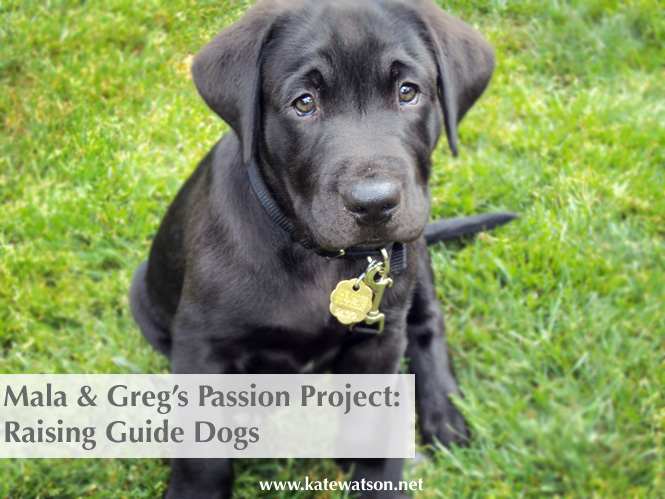 Mala and Greg’s latest guide dog in training, Kenzo, at 8 weeks What’s involved? How does it work?
If anyone is interested in volunteering to raise guide dogs, GDB will put you in contact with the closest group in your area. Our group is called Growing Guides and we meet twice a month with trainers and puppies for lessons and other helpful tips. There are also events held at other locations, i.e., farmers market, airport terminal, shopping mall, baseball games, etc., so puppies can become familiar and comfortable in these type of locations and we can bring awareness to others about working with Guide Dogs for the Blind.
When you are approved as a Puppy Raiser, you have a couple of options. You can start out with an 8-week-old puppy and raise them until they are recalled for the final stage of training on the GDB campus at approximately 14 to 18 months. You also have the option of raising them for the starter stage of 8 weeks to 5 months which is what we are doing now since we have two pet dogs in the house. We have Ally, a 10-year-old yellow lab, and Clinton, almost 2 years old, a career-changed GDB yellow lab due to trachea problem.
If your recalled dog does not pass the final training period, GDB will place them with other service organizations such as Dogs for Diabetics or therapy pet organizations or they’ll become adoptable by either the trainer or another family.
As a Puppy Raiser, GDB reimburses you for required vaccinations and rabies shots. The raiser provides their own dog food from the GDB recommended list and your club provides monthly flea medications and Heartgard Plus medications. Each month, we provide a puppy report to our group leader.
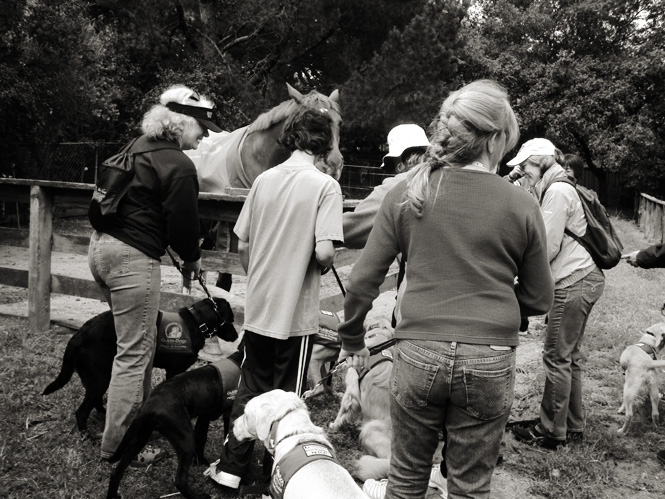 A guide dogs in training event to acclimatize the dogs to other animals Why is this a passion project for you?
The joy of seeing a working dog in the field just brings us so much happiness about how smart they are and what they can do. Seeing a working Guide Dog for the Blind in action reminds me that we can do this and bring joy to someone in need.
This is a labor of love for us and an activity and commitment that we enjoy doing together.
 Guide dogs at home: Mala and Greg’s third puppy-in-training Bodega with their adopted dog, career-changer Clinton Thanks, Mala & Greg! For more information about volunteering with GDB, please visit their website or check out this article on raising therapy dogs.
If you have a passion project or know someone else doing something cool, please reach out! I love meeting people doing amazing things and I hope you love reading about them, too.
Cheers,

Last week I began profiling America’s celebrity photographer Annie Leibovitz for my Artist of the Week series. Over time, as the post grew longer and longer, I realized I was going to have to split it over two posts.
While I haven’t done that before—even when chronicling the work of some exceptional artists and photographers—I did it this time for two reasons: 1) the wide range of Annie’s work and 2) because she is still living and creating, something I believe is more instructive than reviewing the work of deceased masters. Her work has evolved significantly since her late 1960s art-school education and early photojournalism and continues to evolve, as you’ll see below.
If you only know Annie’s celebrity portraiture, the next section will come as a surprise.
Annie Leibovitz: On Reportage and War
In her book At Work, Annie writes: “In 1990, when I was preparing for the first major retrospective of my photographs, I went through thousands of pictures and discovered that the early reportage meant the most to me. I longed to go out into the world again with a little 35mm camera and look for a story…” (p. 102) She ended up in Sarajevo during the summer of 1993, documenting the conflict there. The resulting images don’t seem to appear on web searches, so here is a spread from her book:
 Spread from Annie Leibovitz At Work (c) Annie Leibovitz – Sarajevo 1994
-
Annie Leibovitz and Fashion
As you can see, Annie Leibovitz’s career has been quite diverse: photojournalism, portraiture, fashion… What is she most known for? Arguably, celebrity portraiture but even that crosses editorial and advertising arenas.
Her first major couture shoot, she says, was for Vogue in 1999—relatively recent for someone shooting professionally since the 1970s. “Putting together a shoot like this is not dissimilar to making a small movie,” she says. “You have to have everything planned before you get on the set…
 Annie Leibovitz for Vogue 1999: Puff Daddy and Kate Moss “When I’m shooting, I use a storyboard with thumbnail pictures so that I can make sure that people are in the appropriate place in the photograph in terms of how it will look in the magazine.”
As you read these words, you can see their relationship to her latest work, both editorial and advertising:
 Marie Antoinette for Vogue, by Annie Leibovitz 2006  Annie Leibovitz for Vogue 2005: “Beauty and the Beast” with Drew Barrymore  Annie Leibovitz for Vanity Fair 2007 – with Jennifer Connelly, Alec Baldwin & Aaron Eckhart The following image of Jessica Chastain is part of Annie’s Disney Dream Portraits series. (There is a whole collection of accompanying behind-the-scenes videos for those curious.)
 Jessica Chastain as Merida for Disney, by Annie Leibovitz 2014 When I look at the Dream Portrait above and its accompanying video, I’m struck by how like filmmaking Annie’s current process is and how removed from reality each image has become. It makes me question the boundaries between filmmaking and still photography, art direction and reality, and creating an image versus capturing it. What about you? If you watch the video, note the stand-in horse and the after-image addition of the background…for just two examples.
In the earlier fashion photography above, reality still exists although it is highly controlled. In this latest series, does reality exist? I’d love to hear your thoughts below.
Annie Leibovitz: On Her Work
Before we wrap up this tour through Annie Leibovitz’s archives, I’d like to share some of her random thoughts about her work:
“As much as I love pictures that have been set up, and as important as those pictures are to me, I’d rather photograph something that occurs on its own. The tension between those two kinds of photographs is at the heart of what I do.” (p. 158)
The above is an interesting quote for me because, when I look at Annie’s work, what I see is carefully crafted images with exceptional lighting. Maybe not in her reportage and earlier work, but recently. Didn’t we just talk about that in the section on her fashion photography? Isn’t it interesting that she says she’d rather photograph something naturally occurring?
But here’s something on which we totally agree:
“There are not many smiling people in my pictures. I’ve never asked anyone to smile. Almost never… Where did ‘Smile for the camera’ come from? It’s a tic. A way of directing attention to the camera. ‘Look at the birdie.’ The smile is a component of family pictures. Mothers don’t want o see their children looking unhappy… It took me years to understand that I equated asking someone to smile with asking them to do something false.” (p. 168)
 Meryl Streep, Force of Nature for Vogue January 2012 by Annie Leibovitz And one more on working digitally:
“I was afraid to start working digitally,” she says in the section of her book about the 2007 Vanity Fair shoot (shown above). “It was a whole new world. And in the beginning it meant working with more people. It was a tough transition. The digital technicians weren’t patient with my film assistants. There were a lot of fights.
“The digital guys though they were superior to the film guys, and the film guys thought the digital guys were acting like smartypants. The digital guys made it sound like it was all smoke and mirrors. But I learned to love digital. The technology has transformed the way we work. The more I use it the more I appreciate the possibilities.”
And doesn’t that sum up Annie’s latest work and the state of the industry?!
For more about Annie’s process and the 10 questions people ask her most frequently, including “What advice do you have for a young photographer who is just starting out?,” check out her book At Work. As I said in my prior post, I own others of her books but At Work is my favorite because it tells her story in her own words.
As noted above, I’d love to hear your thoughts on the blurring of reality, and filmmaking and photography, in Annie’s latest work or hear what you think her style is. Please share in the comments.
Cheers,

My latest watercolor painting was inspired by an Instagram post by my friend, photographer Natalie Moser. It is a pic of her son on a Southern California beach at sunset:

I asked Natalie if she was ok with me painting it and she sent along the full-size, original iPhone image for inspiration. Because she actually has two children and a loving husband, when I reworked the image for watercolor, I included the whole family:

If you’re curious how the painting came together, here’s an animated gif. At the end of the post, I’ll also talk you through it:

Occasionally I get asked why I don’t sell my paintings.
Reason #1: I’m a beginner! This is literally my sixth painting since I began painting watercolors and taking class with Guy Magallanes. I have a long way to go before I’d feel like my work was saleable.
Reason #2: Painting is just for me. As anyone who’s turned a creative pursuit into a profession knows, there’s a difference between creating for yourself and creating for others. Being a professional artist may be fun but it is different and, for now, I need painting to be just for me.
So there you have it. On to my California sunset painting, step-by-step:
- The first step in any painting is to trace the major features of the image onto watercolor paper. I started there.
- Then I added transparent yellow and permanent rose, painted wet on wet, in the sky and sand.
- I put on a tiny bit of liquid frisket to keep the sun and its reflection light.
- From a combination of permanent rose and hookers green, I created a brownish neutral to delineate shapes in the water and painted it on dry followed by a pass of a clean damp brush to soften the edges.
- Added some thalo blue to the water, wet on wet.
- Then I decided to add some winsor orange (red shade) to increase the vibrancy in the sky and water, again wet on wet to ensure softness across the sky.
- Added two more passes of thalo blue to the water and sky, wet on wet.
- Another pass of transparent yellow, wet on wet.
- To determine if I was satisfied with the image vibrancy, I started adding a dark neutral mixed from permanent rose, thalo blue, and hookers green, painted on dry and then softened.
- I added several passes of winsor violet for contrast and depth, again painted wet on wet.
- Next I went back to my creamy dark, added some violet, and painted the foreground wet on wet.
- Once satisfied with the foreground, I added texture to the water with a little bit of the dark neutral, painted on dry and softened with a damp brush.
- After one more pass of the neutral to darken the water, it was time to remove the frisket and add the people.
- Wet on dry, I painted in all the people and their shadows, softening the shadows and adding some stray ripples in the water and sand.
And that’s it, folks. Any more questions for me about painting watercolors?
Until next time,

I’ve been posting the Artist of the Week series for a while now and so it’s time to mention America’s household name in photography, Annie Leibovitz. I don’t know what it is about Annie—that she shoots for widely read publications like Vogue and Vanity Fair? famously captured the last photo of John Lennon? was recently in the news for financial struggles?—but everyone seems to know her name.
 Annie Leibovitz with her controversial 1991 portrait of a pregnant Demi Moore. Photo by Marc Silber.  (c) Annie Leibovitz – John Lennon and Yoko Ono, New York City, December 8, 1980 Her celebrity status is somewhat ironic given her statement that, “I’m more interested in being good than being famous.” But, as the Voguepedia relates, “by elevating celebrity portraiture to an art, she has become as renowned as many of her subjects.”
 Angelina Jolie with son Maddux (c) Annie Leibovitz for Vanity Fair, June 2005 Annie is the photographer behind my very first signed photo book (you know I have a little collection, right?). I was in Atlanta with my mom for the 1996 Olympics and Annie was there to sign her book, Olympic Portraits, so I met her and asked her to sign both that and Dancers for me. For more of her Olympic portraits, check out the related Vanity Fair feature.




My favorite of Annie’s books, however, is Annie Leibovitz At Work. I bought it as soon as it came out and read it all in one sitting. What can I say, there’s something powerful about reading someone’s story in his or her own words!
As such I’m going to let Annie tell her own story as much as possible for the rest of this post. All quotes are from At Work, pages cited.
Annie Leibovitz: Early Years
“I was a third-year student at the San Francisco Art Institute when my pictures began appearing in Rolling Stone.” (p. 12)
“During the early years at the magazine, when I thought of myself more as a photojournalist than a portraitist, I usually carried three cameras on assignment. I didn’t want to lose time changing lenses. I would take a 35mm lens, a 55, and a 105.” (p. 16)
 Richard Nixon leaving the White House, Washington, DC, 1974 (c) Annie Leibovitz “I had rudimentary technical skills when I started working. I had never shot in color when Rolling Stone began printing four-color covers in 1973, although by then Jann Wenner had given me the title “chief photographer.” (p. 49)
 The Rolling Stones at The Spectrum, June 29, 1975 (c) Annie Leibovitz On Developing a Style: Portraits
“To survive the printing process at Rolling Stone, I began adding strobes to natural light. This produced very graphic images in terms of form and color.” (p. 52)
“The basic ideas for [two early portraits she took of poets] came from reading their poems, from doing my homework. If I were preparing to photograph a dancer, I would watch him dance. I would listen to the musician’s record. Somewhere in the raw material was the nucleus of what the picture would become. It didn’t have to be a big idea. It could be simple. There’s a case to be made that the simpler the idea the better.” (p.55)
 Whoopi Goldberg (c) Annie Leibovitz 1984 “The portrait of Whoopi Goldberg was shot just as her career was taking off. She had had a big success with a one-woman show at a club downtown in New York. I had looked at some grainy tapes of her act and was drawn to one of her characters, a little black girl who thinks that she’s white underneath. The little girl bathes in Clorox to get rid of the black. My original idea wasn’t very good. I wanted to paint Whoopi white and let the paint drip off her. Then I thought she should be in a white bath. A photographer who worked in advertising a lot said, Oh, use milk. Milk photographs as white really well.
“I met Whoopi at her house in Berkeley and looked at her bathtub. A friend of hers next door had a better one and we decided to use that. We heated pots of milk on the stove and poured them into the bathtub and Whoopi got in. I didn’t know how it was going to look, but I kind of thought that she would be sitting up in the bath and scrubbing herself. She sat back, and suddenly we had a very strong image. It was a total surprise.” (p. 61-62)
Annie Leibovitz: On Advertising
“Advertising work did not come naturally to me. It was against the grain of the West Coast art-school philosophy that I’d started out with.” (p. 64)
In fact she’d been proud of having not accepted advertising work, but in the early 1980s then art director of Vanity Fair, Ruth Ansel, talked her into it. “I tried some advertising jobs, only to find them as confusing as I had imagined they would be. Attempting to follow a client’s directions altered my point of view. It just felt wrong.” (p. 64-7)
The first time an advertising gig clicked for her, she says, was a 1987 American Express campaign. Parry Merkley, art director at Ogilvey and Mather told her “this campaign was going to be different,” she says. “It was a portrait campaign and I would have the freedom to do what I wanted to do.” (p. 67)
Between 1987 and 1992, Annie photographed one hundred three prominent individuals, the first of which was newly retired former-Speaker of the House Tip O’Neill:
 Tip O’Neill for American Express, by Annie Leibovitz 1987 The campaign won numerous awards, including the Clio, and was named the year’s Best Advertising Campaign by Advertising Age. The relationship was clearly a profitable one for both because Annie is still photographing celebrities for the credit card company:
 Tina Fey for American Express by Annie Leibovitz, July 2008 What do you think of when you think of Annie Leibovitz’s work? Her early photojournalism, her recent fashion photography, celebrity portraits, or something else?
Stay tuned for part two of Annie Leibovitz, next week.


A friend posted the following video on Facebook the other day and I think it’s worth a watch for everyone in a creative field. It’s public radio host, Ira Glass‘s, take on the creative process translated to video by Get Out of the Box:
I know we can all relate to this on some level. When you first start making work, of course it’s not where you want it to be. And, as Ira Glass says, that’s ok! The hill is surmountable. Practice, practice, practice.
Before I started my photography business, before even considering becoming a professional photographer, I assumed professionals were on a whole different level than I was. And of course they were—purely based on experience. However, I may have erred too far on the side of thinking they were at the top of Everest and I was on a mole hill. And that was not true.
While on some days I feel that I still haven’t reached my potential as a photographer (who does?!), after shooting more than 70 weddings and hundreds of portrait sessions, I am confident and competent. But it’s good to keep growing and striving for that next level. There is more we can all aspire to and work to achieve.
They don’t call it the creative process for nothing. Wherever you are in that process, take a moment to acknowledge how far you’ve come and honor your efforts in getting where you are today. Then take one more moment to look into the future at where you’d like to be in the next six months, year, five years…
Got it in mind? Great! Now get back to work. 😉
For a visual representation of Ira’s commentary, check out this gorgeous poster by Etsy artist Nikki Clark:

Cheers,

|












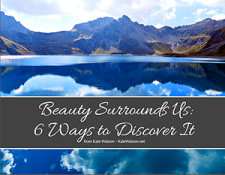
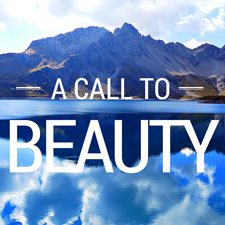
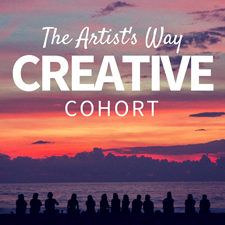
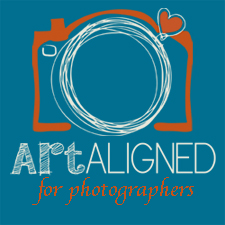






Artist of the Week: Annie Leibovitz » KateWatson.net - […] tuned for part two of Annie Leibovitz, next […]